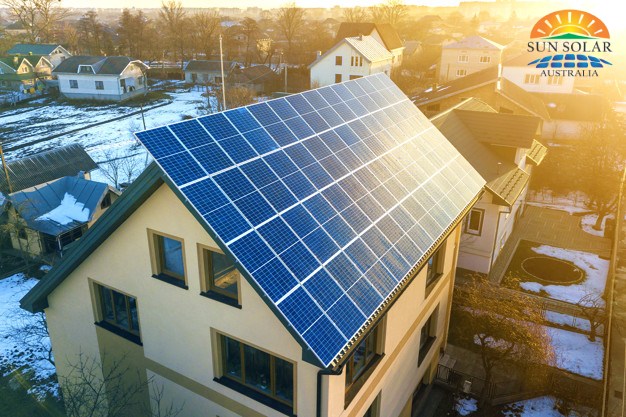Introduction to Solar PV Systems
A solar photovoltaic system, commonly known as a solar PV system, generates electricity from the sunlight. It can help to reduce electricity bills and carbon emissions by producing sustainable electricity. At Sun Solar Australia, we offer a wide range of solar PV products to help you harness the power of the sun for residential, commercial and industrial electricity applications of all sizes.
Installing a solar PV system allows you to generate your own electricity to supply your entire home or business. The amount of electricity generated by the system is dependent on various factors, such as the size and arrangement of the solar PV system, the wattage and the relative efficiency of the PV module type, the climatic condition and the peak sunlight in your area, and so on.
Types of Solar PV System:
-
1. Grid-Connected Solar PV System
The grid-connected or grid-tied solar PV system is a more popular choice among homeowners. It is cost-effective, and provides assurance that you will not run out of electricity in the event of your solar panels producing less electricity. It consists of solar PV panels, a grid-connect inverter, associated mounting hardware, electrical cables, and safety devices. This type of PV system can help you to generate your own renewable energy on site during daylight hours with good solar irradiation. However, at night and on cloudy days when the system is not producing enough energy, you can fulfil your electricity needs from the local utility grid. You can export excess electricity back to the utility company when the PV system is generating more electricity than you need during daylight hours. The way this exported electricity is metered and the rate of financial return varies by region and utility provider. During the time of blackouts for the safety of your equipment and the safety of power workers, this type of system automatically shuts down.
-
2. Grid-Connected Solar PV System with Batteries
A grid-connected PV system with a battery or batteries is one step ahead of grid-connected solar PV system, which gives you the best of both worlds. The PV panels can be used to charge a battery during the day, and then provide this electricity to your home or business whenever it is needed (day or night). With this type of PV system setup you will still remain connected to the utility grid, which can provide you access to electricity during periods of high use or when the weather is bad for extended periods.
-
3. Off-Grid Solar PV System
The off-grid solar PV system can be extensively applied in remote locations, and other areas not covered by the main power grid. When your house or business requires a larger amount of electricity and is located away from existing power lines, this type of solar PV system setup can in many cases offer the least expensive and most viable option. The PV modules generate electricity that is used to charge batteries during sunlight hours. This can then power DC loads directly or be provided to the AC load through the inverter. This system configuration provides independence from the utility grid. However, there are limitations on the days of autonomy and the size of the loads that can be supplied by batteries and inverters on their own.

